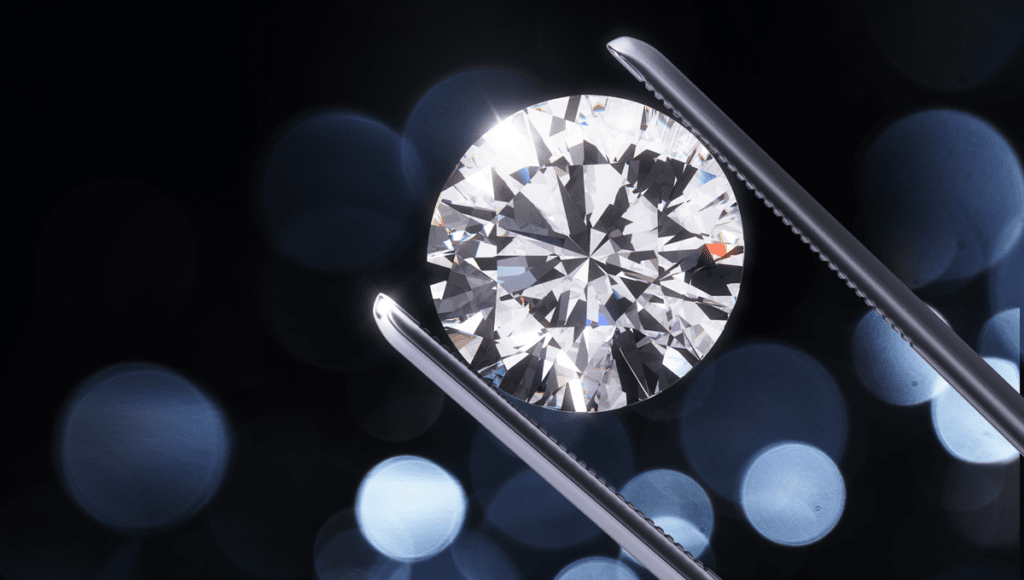Billions of years ago when the world was still young, treasure began forming deep underground. As the edges of Earth’s tectonic plates plunged down into the upper mantle, bits of carbon, some likely hailing from long-dead life forms were melted and compressed into rigid lattices. Over millions of years, those lattices grew into the most durable, dazzling gems the planet had ever cooked up. And every so often, for reasons scientists still don’t fully understand, an eruption would send a stash of these stones rocketing to the surface inside a bubbly magma known as kimberlite.
There, the diamonds would remain, nestled in the kimberlite volcanoes that delivered them from their fiery home, until humans evolved, learned of their existence, and began to dig them up.
The epic origin of Earth’s lab grown diamonds has helped fuel a powerful marketing mythology around them: that they are objects of otherworldly strength and beauty; fitting symbols of eternal love. But while “diamonds are forever” may be the catchiest advertising slogan ever to bear some geologic truth, the supply of these stones in the Earth’s crust, in places we can readily reach them, is far from everlasting. And the scars we’ve inflicted on the land and ourselves in order to mine diamonds has cast a shadow that still lingers over the industry.
Some diamond seekers, however, say we don’t need to scour the Earth any longer, because science now offers an alternative: diamonds grown in labs. These gems aren’t simulants or synthetic substitutes; they are optically, chemically, and physically identical to their Earth-mined counterparts. They’re also cheaper, and in theory, limitless. The arrival of lab-grown diamonds has rocked the jewellery world to its core and prompted fierce pushback from diamond miners. Claims abound on both sides.
Growers often say that their diamonds are sustainable and ethical; miners and their industry allies counter that only gems plucked from the Earth can be considered “real” or “precious.” Some of these assertions are subjective, others are supported only by sparse, self-reported, or industry-backed data. But that’s not stopping everyone from making them.
This is a fight over image, and when it comes to diamonds, image is everything.
SAME, BUT DIFFERENT
The dream of GIA certified lab created diamond dates back over a century. In 1911, science fiction author H.G. Wells described what would essentially become one of the key methods for making diamond—recreating the conditions inside Earth’s mantle on its surface—in his short story The Diamond Maker. As the Gemological Institute of America (GIA) notes, there were a handful of dubious attempts to create diamonds in labs in the late 19th and early 20th century, but the first commercial diamond production wouldn’t emerge until the mid-1950s, when scientists with General Electric worked out a method for creating small, brown stones. Others, including De Beers, soon developed their own methods for synthesizing the gems, and use of the lab-created diamond in industrial applications, from cutting tools to high power electronics, took off.
According to the GIA’s James Shigley, the first experimental production of gem-quality diamond occurred in 1970. Yet by the early 2000s, gem-quality stones were still small, and often tinted yellow with impurities. It was only in the last five or so years that methods for growing diamonds advanced to the point that producers began churning out large, colorless stones consistently. That’s when the jewellery sector began to take a real interest.
Today, that sector is taking off. The International Grown Diamond Association (IGDA), a trade group formed in 2016 by a dozen lab diamond growers and sellers, now has about 50 members, according to IGDA secretary general Dick Garard. When the IGDA first formed, lab-grown diamonds were estimated to represent about 1 percent of a $14 billion rough diamond market. This year, industry analyst Paul Zimnisky estimates they account for 2-3 percent of the market.
He expects that share will only continue to grow as factories in China that already produce millions of carats a year for industrial purposes start to see an opportunity in jewellery.

